Would you like to see a garden that needs no watering, no digging, no fertilizing, no weeding and produces fresh, organic food on auto-pilot, year after year? One that can yield up to 8 times more produce than traditional gardens1, to feed you and your family in times of crisis with some of the healthiest, tastiest, most nutritious food you could possibly eat… and it can fit right in your back yard.
This amazing food farm works under some of the most extreme weather conditions, in places such as the Jordanian Desert, South Africa, China, Australia and in every corner of the United States, including Alaska.
Because of the brilliant way in which it is designed, this survival garden is completely hidden in plain sight from nosy neighbors and the hungry looters that will roam the streets post-collapse in search for food. NO ONE will ever figure out that you have an endless supply of food right in your backyard.
In this pocket-sized Paradise, fruit trees, veggies and medicinal plants all live together in perfect harmony… taking care of each-other... surviving and thriving the way they did for hundreds of thousands of years: without human intervention.
I’m talking about beans, potatoes, carrots, spinach, squash, berries… and hundreds of other plants and fruit trees… all on auto-pilot, all regenerative.
So please pay close attention to this presentation, because I’m about to tell not just how cheap and easy it is to set up and maintain (compared to a regular garden and an aquaponics system), but also give you the step-by-step instructions that even a 10 year old can follow.
...for some very good reasons… Unlike traditional gardens that attract looters, this survival garden completely hides its goodies under a layer of leaves, trees and wild plants.
It has your back covered in times of social chaos, Martial Law and a food crisis, it helps put food on the table when your stockpile runs out or gets spoiled, and can even slash your grocery bill by 70%, 80% or even 100%, so you’ll never have to buy food from the supermarket again.
By the way, you can make it work even if all you have are a few square feet of land, and even if you live in a tiny apartment and all you have is a balcony.
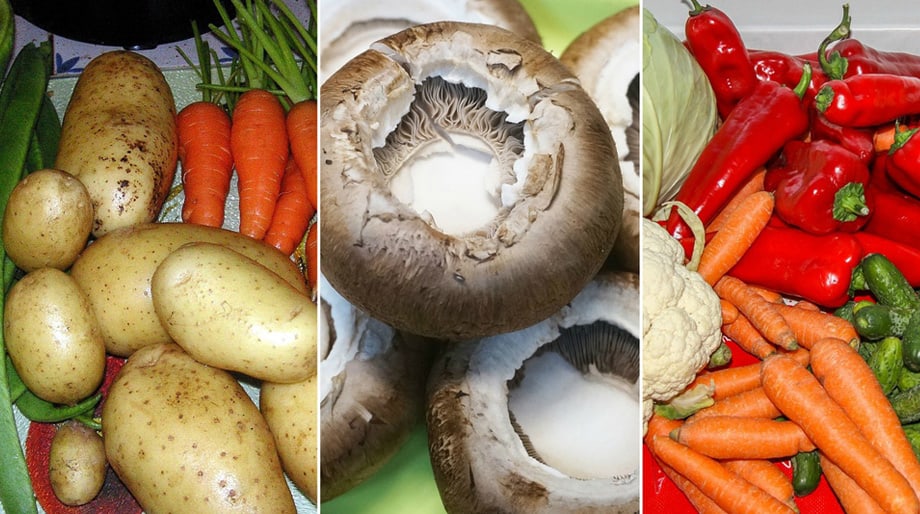
I don’t care how much you stockpiled, you need a renewable food supply that can provide for the long hard years following a food crisis, or until you can bug out to greener pastures. Make no mistake about it, it will take years of famine after the initial collapse, and even longer for things to go back to some sort of normal...
Don’t believe me? Just look at what’s happening in Venezuela. 30 million people fighting for and stealing food… They’re so hungry they’re literally eating dogs, cats and pigeons, butchering animals in the zoo, attacking food trucks and going through garbage cans. Imagine, if they can break into a zoo and attack food trucks, noticing and taking the veggies from your garden one night will be like taking candy from a baby...
The food crisis is not only far from being over, but it also threatens to expand to other parts of the world including the United States… The mega-drought that everyone’s talking about, the gargantuan $20 trillion debt and the fact that 20% of American children are on food stamps2, are all the signs we need to know that the next food crisis will happen the same way it did in Venezuela: tough economic factors, and aggressive socialist measures.
Regardless of what social freebies the leftists will hand out next (out of your tax dollars), one thing is clear:
To prepare for it, a stockpile is a great start but also not enough. You need a steady food supply, one that can keep you and your family well-fed for years to come, one that won’t get stolen one night... Because waking up one morning to see your entire stash gone is going to be not just a devastating blow, but also the end of your survival journey.
A garden or a farm will always attract the hungry and, unless you’re willing to guard it 24/7 and set up an expensive lighting and monitoring system (that won’t work after an EMP, anyway), you might not get to eat all that food.
There is a solution to all of this, one that’s actually dirt-cheap to implement, but before I go into that, let me properly introduce myself. My name is Dan F. Sullivan and I’m the owner and editor-in-chief of SurvivalSullivan.com one of the biggest survival blogs on the Internet. Maybe you’re one of my fanatic subscribers, or maybe you stumbled upon my articles on sites such as American Preppers Network, Backdoor Survival, Urban Survival Site, Off the Grid News, Personal Liberty and many more.
If you already read some of them, then you know like to get to the point… fast. In this one, me and my team of survival experts will begin to teach you how to start your survival garden for pennies on the dollar, by using these organic gardening methods that go against mainstream agricultural techniques...
EACH AND EVERY LAST ONE can grow just fine on its own, without constant weeding or spraying with pesticides, herbicides and fungicides… which are not only responsible for the genocide of the bee population, but these fossil-fuel poisons are destroying our bodies and our entire ecosystem.
Just set up the survival garden the way we teach you and Mother Nature will take better care of them than you, by keeping all the plants, bees and even backyard animals safe inside their natural ecosystem where everything works in perfect harmony: flowers attract bees and “good” insects while some herbs and wasps repel “bad insects”…
You don’t need to water every day because rainwater is all they need, even if it doesn’t happen very often. There never seems to be a drought out into the woods, because the soil retains a huge amount of water and remains moist throughout the year...
Others plants are natural fertilizers. When they die, their leaves fall on the ground, decompose and enrich the soil, feeding the rest of the plants…
These food forests are so “perfect”, that they work even better when animals are added. Chicken, ducks, goats, pigs, and even cows add extra fertilizer the soil and regulate the worm and insect population.
I’m so excited to tell you that hundreds of thousands of people are starting to replicate this eco-system in their own back yards with some amazing results… getting 2 times, 4 times and up to 8 times more food, pound for pound, than they would get if they set up a traditional garden in the same amount of space.
Conventional gardening and farming are “ok”, sure, but aren’t as healthy as you might think. The words “organic” and “bio” don’t mean anything anymore, because big food corporations “changed” the definitions to increase sales and profits…
These money-hungry vampires are doing everything they can to make food grow as fast and as big as possible... because speed and more pounds per square foot mean more money in their pockets.
Never mind that they taste like plastic, lack nutrients, and that are sprayed with oil containing pesticides, which eventually end up in your body…
The name of the game is profit, and these guys are masters of it. Plus, I hate to say this but, conventional gardening has the same problems, because it works the same, only on a smaller scale.
First, all microbial life is killed when the soil is tilled or plowed (because air and sun’s UV rays destroy the tiny organisms living inside it). That’s why crops grow in record time...
Only problem is, the trick doesn’t work forever. The soil quickly gets depleted of nutrients, so they need to bring in fertilizers, fungicides and pesticides to continue to see results3… This is getting harder and harder because the weeds are getting more and more resistant, just like your body stops reacting to antibiotics when you use them for the long term.
When those stop working as well, the only thing left to do is plant something else (they call it crop rotation), or move to some other piece of land and destroy that as well.
You see, when you spoon-feed your plants with water and nutrients, the roots don’t develop as well and can’t absorb that many nutrients from the soil. Even the ones that grow in your garden using traditional methods turn into “couch potato plants”...
Just like a kid who’s always sick and you have to keep him on antibiotics for the rest of his life. High-calorie, low nutrient crops that cost money to fertilize and need constant watering, spraying and daily care... This is not the kind of food we should be putting in our mouths….
All of these are signs that the old agricultural ways aren’t working anymore… and that we need to change our thinking and our habits of we want to eat healthy...
These aren’t exactly the things you hear about in the enemedia, right? Don’t worry, though, because there is a better way to feed yourself and your family in times of crisis. This way is actually healthier than gardening and is perfect for survival purposes. It is called permaculture and it’s a method of replicating nature’s way of growing food with little effort in your own back yard.
This type of garden is as organic as it gets and, more importantly, it’s completely hidden in plain sight (because of the ingenious way in which it is designed, keeping all the goodies behind a thick layer of bushes and trees).
a slice of Heaven
Flowers, veggies, fruit trees, bees, insects, worms, tiny microorganisms, weeds and even backyard animals are all part of this perfect ecosystem that thrives under one condition: that you don’t mess with it.
You don’t have to dig it except ONCE in the beginning. This type of garden grows on its own, so you don’t have to break your back working on it. Tilling and plowing are nothing short of mass genocide of the things living just a few inches below the ground...
You don’t have to weed it, either, because weeds are a part of the ecosystem and they actually help the other plants.
No, you don’t have to sacrifice your emergency water supply to water it. Not nearly as much as you would a traditional garden, at least. Dig a few ditches in the right places to collect rainwater and provide a timed release to the soil. This forces the roots to grow deeper to get it, resulting in strong, healthy plants… They’ll have enough water of for weeks or even months without rain.
You also don’t have to re-plant over and over again, every year at specific dates. Many of them are perennials, meaning they last for years and years, while others re-seed themselves, so you don’t have to worry about stockpiling too many seeds for Doomsday.
This can and will work for you… and have a sustainable food source that’s “better than organic”
With so little work, you can do this even if you’re 80 years old and have a bad back and knees, even if you live alone and even if you’ve never held a garden hoe in your hands before.
You won’t get as much produce of one kind as you would from a traditional garden… because you’ll get a VARIETY of fruits and veggies that, added pound for pound, will double or even triple your yield from the same square footage. You’ll have so much food that you’ll have no choice but to sell some of it to your neighbors, or barter with it for other survival items and services you may need post-collapse.
In a long-term survival situation, you’ll get sick and tired of eating the same things over and over again, so you’ll have a few dozen types of veggies such as squash, onions, watermelons and sweet potatoes, plus all the apples, plums and walnuts you can eat. Some of these plants will even feed you during winter, when everyone else is stuck eating canned food, so you don’t have to dig into your stockpile unless you want to.
If this sounds a little too good to be true, I understand you may be a little skeptical… I was too, when I discovered permaculture. But I decided to get involved, find out more and… I eventually got hooked. I could not believe how many folks are abandoning destructive gardening and farming techniques. According to FoodTank.com, there are now over 1 million certified permaculturists in 140 countries, with over 50,000 of them being American4. This doesn’t even count the ones who’re doing it on their own, without formal training.
I estimate that there are hundreds of thousands of Americans, some of them preppers, who have ditched modern agricultural techniques and have embraced permaculture in every corner of the United States: from Phoenix to Vermont, from Upstate New York to Alaska, more and more people are seeing the benefits of this type of autopilot food farm.
In fact, I’ve seen some pretty amazing large-scale projects, showing that they can feed not just entire families but entire communities, something to think about post-collapse, when you and your neighbors will have to look out for each-other: the 68 acres MiKu Valley Farm in Ontario, Canada, the Prospect Rock Permaculture in Vermont, New Hampshire, the one acre food forest in Pittsburgh and many more.
There’s also been some media coverage. FoxNews.com and CNN.com each have one short piece about it but, because it’s a “boring” topic for, it didn’t get that much buzz…
Even some celebrities are endorsing permaculture: Alicia Silverstone, Prince Charles and even Richard Branson, who says:
“Recently, James Cameron’s property hosted the ‘Beyond Organic NZ Tour [...] The huge 50 acre food forest Cameron is developing with the help of the community and permaculture designers already has over 5,000 edible fruit trees.”
Of course, you don’t need that much space because permaculture works even if all you have are a few square feet of space.
In your own back yard, and show you why it will work for you regardless of your location, climate or level of skill.
Step #1 is to do a little digging and mulching on your soil (with dead leaves, branches, hay, scraps, chicken droppings – all free).
Step #2, you to dig a few shallow ditches to collect rainwater (so you don’t have to water your garden every day).
The third and last step is to plant the seeds by knowing which plants go together and which don’t. Asparagus and tomatoes, lettuce and garlic… beans and carrots… there are literally thousands of combinations you can make to exponentially grow the yield and have a variety of fruits and veggies where you’d grow just one or two.
You don’t just get a high-yield farm that will maximize your health and minimize the odds of needing your doctor, you get a survival garden that’s completely hidden from hungry neighbors and looters, who’ll never suspect the treasure you have hidden inside your back yard (or even your front yard, for that matter).
This may surprise you but if you're a gardener, you’re already following some of these principles without even knowing it… And now you have the opportunity to take things to the next level and make “fancy” designs that will give superior crops, delicious fruits, berries, veggies and powerful medicinal plants, a veritable Noah’s Ark of foods you simply cannot get from a traditional garden.
Each plant has its role to the well-being ecosystem, which is why this survival garden does not need you...
Some are good at keeping insects and other pests away, others attract bees and other pollinators… Beans and pears are nitrogen fixers, while others such as thorny bushes can keep deer and other animals at bay.
And the most important thing, is by far, the soil. Though I promised you little work, you will have to do much of it in the beginning. You need to enrich it with things such as dead leaves and branches, compost and straw before you plant anything. While some are throwing all of these away, you'll be using them to enrich your soil, no matter how infertile it is today, even if you’ve never been able to grow anything on it before.
The last critical thing is water. The good news is, in a drought-stricken America, you need a lot less than you think, because this farm is designed for minimal waste. The ecosystem mimics the year-round moist forests and ensures that the water inside the earth doesn’t evaporate, like it does on farms and traditional gardens. Thus, you’ll barely have to water your survival farm... just like no one is watering the woods.
That’s about it, really, but if you truly want to take it to the next level, you can also start raising animals. Chicken, turkeys, guinea fowls and ducks are easy to take care of, are excellent pest control AND they fertilize the plants, so long as you let them roam freely.
Fortunately, as one of the top survival bloggers out there, I knew exactly where to find the right people who can show you how to do this to anyone and get results.
I went through dozens and dozens of preppers, homesteaders and gardeners to find the ones with the most experience. And I found two amazing ladies that have been doing this a long time and want to show us how it’s done.
Jeanie is a 20-year gardener who knows her stuff. You may have seen some of her articles on SurvivalSullivan.com – they’re simply amazing.
And so is she… not just because of her extensive knowledge and experience, but for agreeing to be a part of this unique project that took us over 3 months to put together.
There’s only one person I know who knows more about permaculture than Jeanie, and that’s Elizabeth, a 30-year gardener and 10-year permaculturist from rural Scotland. She has a huge amount of experience and was more than thrilled to help us. The climate in the UK is very similar to that of many parts of America, so rest assured that her advice works no matter where in the U.S. you’re located… or the world, for that matter.
Jeanie and Liz’s combined 50 years of gardening experience PLUS my own survival experience are all condensed in an easy-to-read, complete survival farming course that will ensure you always have a “stockpile”…
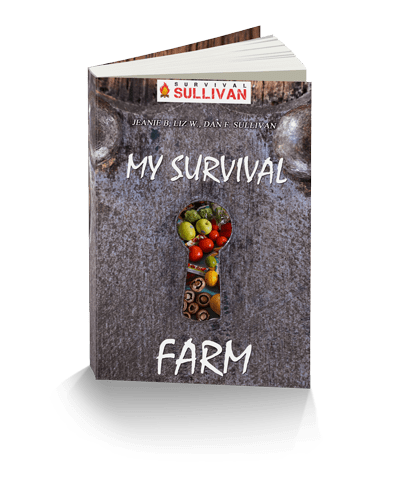
“My Survival Farm”
...and it’s like nothing you’ve ever seen before… An A to Z guide on survival gardening that is easy to read and a joy to put into practice, full of photos, diagrams and step by step advice. Even a kid can do this and, in fact, I encourage you to let the little ones handle it, to teach them not just about self-reliance but also about how Mother Nature works.
Here is just a glimpse of >what you’ll find inside:
How to plan, design and put into action high-yield survival garden that will literally keep you and your family fed for life, no matter what hits you, even when everyone else around you is starving to death. No digging and planting year after year and no daily watering because you’ll have more important things to worry about when TSHTF.
How to set up highly nutritious soil for your plants. Do this before you plant anything and you're on your way to setting your food forest on auto-pilot for decades to come. I'm gonna tell you this one “weird” thing to add to the mulch that's not only highly effective but also 100% free (because you already have it in your home right now).
Step-by-step instructions on how to plant over 125 plants inside your permaculture garden. Plus, special instructions on choosing the right ones for your climate. From Arizona to Alaska, you can do this anywhere…
How to “marry” your plants. We're gonna tell you which grow well together and help each-other survive and thrive, so they don't ever compete for sunlight and nutrients. You get the full table of plants that work well with one another as well as the ones you should NEVER be put together.
A hotlist of perennials that you don't have to re-plant every year. They just grow and grow, and all you do is harvest them. In some cases they yield food all-year round (like Okinawan spinach, which absolutely thrives in warm climates).
How to take care of pests naturally, and without using any pesticides. There are certain plants that act as the food forest’s policemen by repelling “bad” insects. It’s in their best interest too, because if the plants around them die, they die.
The “secret” plants that are natural fertilizers, so you never have to spray your soil ever again. These little workers pull minerals from deep down the soil with their long roots then, when they die, the leaves fall next to your other plants and start decomposing. You won't have to spend a dime on fertilizers ever again.
How to love your weeds. They not only fit into the ecosystem but some of them, such as dandelions, are actually helpful to the soil. As far as the undesirable weeds, we’ll tell you two excellent ways to prevent them from growing that are 100% natural, and we’re also gonna tell you how to “read your weeds” and detect potential soil problems.
Next, we won’t just show you how to grow bees for pollination, but how to attract them using these bee-friendly plants.
How to grow the most popular alternative sweetener on the market: STEVIA, to make your stockpile taste better. It’s much healthier and up to 200 times sweeter than sugar and calorie-free, meaning it does not affect blood sugar levels. (Tip: you can use it to bake survival bread.)
How to make your own organic fertilizers, because chemicals and fossil-fuel based pesticides are the last things you want to put in your soil.
Brace yourself because we’re also going to talk in-depth about each of the animals that are “permaculture friendly”. Most of them are really easy to grow, the get along well with your plants and, best part, they get fed by the farm so you don’t have to remember to do it many times a day.
Stuck in the city? Have no fear, because we've bent over backwards to find solutions for you. We're going to let you in on some unique ways to make permaculture work in small spaces, so your food needs are covered if you can’t leave your apartment. We'll share our best kept secrets on indoor gardening, that go beyond vertical stacking on walls and trellises.
How to make food hedges, to not only protect your front and back yard from outside view, but also to give you a secret source of tasty, nutritious foods.
We can't wrap this up without talking about medicinal plants. In an SHTF situation, access to doctors and meds will be restricted, which is why you'll need to grow these 50+ plants into your garden that alleviate or heal hundreds of diseases and conditions. Plus, we'll show you how to actually use them in an emergency, starting with burns, spider bites, warts and many more. The health benefits from these plants are staggering: from lowering cholesterol to improving eye sight, mobility and reducing stress, there is not a single organ in your body that won’t be improved.
Now, this course is valuable whether you’re a seasoned gardener, farmer, or just a prepper looking for a way to feed his family once the stockpile is gone. No stone is left unturned. Our plans that work for anyone, from Mainland U.S. to Alaska, Canada, the U.K., Australia and any other place on earth.
At the same time, we filled it with dozens and dozens of secrets that I can almost guarantee you didn't know. We worked our rear ends off to make sure that your survival garden will not fail you when the big one hits.
But the way I made this course a home run was that I added my own touch… I added some crucial tips on how to hide and manage your survival garden and the resulting food so no one will ever touch it. I can guarantee that no such course has ever been written from a prepper’s perspective… because I looked!
The reason I’m telling you all of this is because most people are disappointed when they buy “another gardening ebook”, because they're hoping to find things they didn't previously know. Permaculture is a fresh new way of looking at gardening and survival not just because of what you can grow, but how you do it...
Of course, I wanted to make this much more than just an e-book, so...
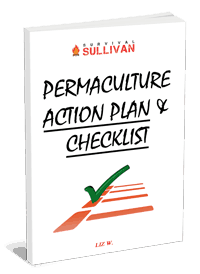
Bonus #1 is the Permaculture Action Plan and Checklist.
One thing I learned after writing thousands of pages of content, is that folks often like to have an overview, something to serve as a reminder of the key ideas as well as the order in which to do things.
This condensed version of the main course will make sure you avoid the costly mistakes that could mean little or no yield from your garden in the first year. Why screw it up when you can get it right the first time?
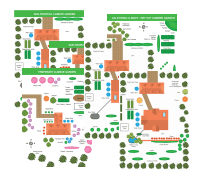
Next we’ll give you over 10 example diagrams of permaculture gardens. They’re similar to what your own design will look like, and will help you make your own customized plan quickly and easily. The main course has plenty of diagrams, but these will help you save time.

My 3rd bonus is called SHTF Water. We talked about how this survival garden doesn’t need that much water, but you sure will. We’ll cover everything you need to know about water for survival purposes: storing, harvesting, finding water sources in any terrain, and, of course, filtering and purification.
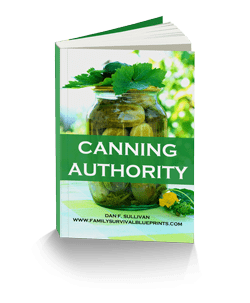
The next two bonuses will help you deal with all that extra produce, once you have your permaculture garden up and running. Canning Authority will help you can everything the right way and avoid spoiling your cans and getting infected with botulism...
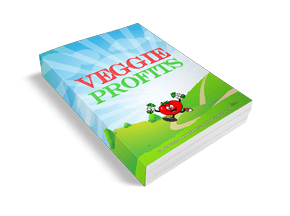
...while Veggie Profits will help you sell your excess produce and make a few extra bucks to buy more preps. You can also barter with it post-collapse, to help you thrive when everyone else will be digging through trash cans.
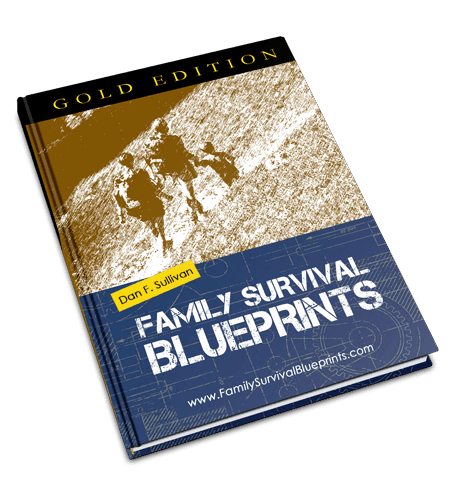
Believe it or not, there’s more. I decided to do something “foolish” and might end up regretting it but… if you act now, while this video is up, you’ll also get unrestricted access to the Family Survival Blueprints, my first and most treasured survival course.. It’s my “survival 101” course, something I think every American needs to read and print out to have as reference when the world goes dark.
Wow, that’s a lot of courses and...
I’ve seen permaculture seminars costing a whopping $1,500, and phone consultations starting at $150 an hour. That’s just insane if you ask me…
And if you want to learn from the same sources that some people are paying at least $800 for, and get their Permaculture Design Certificate, be my guest. It’s not something I can afford, not when my experts can write much better content.
So I decided to price the entire package below the $500 mark, because this is something everyone should know. If they taught this in high-school, we’d all be a lot healthier, happier and better prepared…
In fact, I pushed the price even lower, well below the $100 tag. I figured that if I really wanted to help people, I should charge what I myself would spend for it.
That’s when I knew exactly how much to ask for it. You’ll be thrilled to know that, for now at least, you can get everything for a one time payment $39 and not a penny more.
You can save the 40 bucks on your grocery bill in one week once your garden starts producing…
Speaking of which, the sooner you start, the sooner this little ecosystem will start feeding your family. No farm grows overnight, and permaculture gardens are no exception. Click the button below, and you can literally start reading and planning within minutes.
As you know, time just isn’t on our side when it comes to survival preparation. Whether it’s building a food stockpile, learning survival skills or setting up a bug out retreat, the sooner you start doing them, the more prepared you are when the unthinkable happens. Same thing with survival farming. Sure, you will make some mistakes, but me and my experts are just an e-mail away if you ever need us. You won’t get this kind of support from any other gardening course on Amazon.
And if you try it and think this isn't for you, or even if you don’t do anything and just want your money back, no problem. Many would rather stick to their stockpile, thinking things will go back to normal after a while… groceries stores will re-open, and they'll be able to buy supermarket food once more…
But as someone who lives and breathes survival every day, I highly doubt it’ll be the case. When the big one hits, things will NOT go back to normal anytime soon. 5, 10 or even 20 years of famine, political and social unrest and people killing each-other for a loaf of bread... We’re looking at some tough times ahead…
Your first option would be to set up an aquaponics system. They’re pretty popular these days but have obvious flaws that make them impractical for the average prepper. They not only need DAILY monitoring, but also work on electricity, meaning that they’re useless in case of an EMP. In fact, even a simple power outage will kill all your plants and fish, because they need electricity in order to survive.
Your second option would be to start a traditional garden. If you put in the hard work and are willing to re-plant every year at the right time and spray pesticides, your will see results… unless pests or disease hit your crop hard. You’ll also have to guard it for looters every night AND worry about crop rotation and seeds. All of this is manageable but requires continuous effort on your part.
Besides, where are you going to find pesticides post-collapse?
Or you can choose the 3rd and best option: to work with Mother Nature and not against her… Let her feed you and your family by starting a hidden survival farm that not even a drone could spot from above…
The costs to set it up and maintain are much smaller compared to a traditional garden… because you don’t need to buy pesticides every year, you don’t need fancy gardening tools and equipment, you don’t need that many seeds and you don’t even need to water it that often because the ditches you’ll dig should be enough in most of the cases…
I understand if you’re feeling iffy about handing some stranger your money, but the price doesn’t even matter because you’re fully protected by my iron-clad a 60-day money back guarantee. If, at any time within the next two months you change your mind, just send me a quick email and I'll refund you every penny.
No questions asked, no BS and you can even keep the bonuses – my way of saying “thank you” for giving it a try. If you've ever bought anything from me before, you know I'm a man of my word and I ALWAYS keep my promises.

And now, I need you to promise me something: that you won't leave your family's fate to chance by not having a renewable food supply. This hole in your survival plan needs to be fixed ASAP, and the best way to do it is to start your own survival garden. Embrace permaculture because it’s not just a bunch of gardening techniques, it’s a way of life.
As Bill Mollison, the father of permaculture once said, “the only ethical decision is to take responsibility for our own existence and that of our children.”
So click the button below to get started designing your little slice of Heaven:

Question: What is permaculture anyway?
Permaculture is a unique way of designing and growing a garden or a farm that mimics natural ecosystems found inside forests. It comes from the two words, “permanent” and “agriculture”, and it allows you to grow together dozens or even hundreds of plants, backyard animals, bees and fish that work with each-other, protect each-other and help each-other grow.
The father of permaculture is considered to be the Australian Bill Mollison, who, in 1978, wrote the first book on the topic, titled Permaculture One.
As you can imagine, a lot has changed since then, the techniques have been optimized to fit different climates and are less intrusive. At the same time, the 12 basic principles of permaculture still stand true… “observe and interact”, “catch and store energy”, “produce no waste” etc. You can read the rest in the first chapter of the book.
Question: Is it hard to maintain such a garden?
Not at all, though you will have to do some work every now and then. There’s no weeding, no digging and very little watering. Sure, you will have to add new plants, you will make some mistakes… but those are all nothing compared to the hard work you need to put into a traditional garden.
Question: Is the 60-day guarantee real?
Yes, absolutely. I'm using ClickBank®, the biggest online retailer of digital goods, having an A+ rating with the Better Business Bureau, and my site is ClickBank® secured and trusted.
Their automated process makes it really easy for you to quickly get your money back if you are unhappy for whatever reason by sending either me or ClickBank® an email for a full refund. Remember you have two whole months to do it.
Question: Can I get the product in physical format?
Not at the moment, no. By making this available in digital format I can keep the costs low while you get fast, instant access.
Question: Is my credit card safe?
Yes. The transaction is processed by the online retailer, ClickBank®, and that’s what will show up on your bank statement.
ClickBank® processes hundreds of thousands of eBook transactions every single month and they’ve been doing this for a very long time and handle money with care.
Question: Can I access the product from my phone or tablet?
Sure. After your purchase, you will be taken to the Members Area but you'll also get a direct link via e-mail. This way, you'll be able to access the product anytime you want it by simply logging in to your email from your phone, your iPad or your laptop and clicking the link to get to the same Member's Area.
Question: Dan, can I make a printed copy of this course? How about several?
By all means. Feel free to make as many as you want.
Question: What disaster is most likely to hit us?
That's a fantastic question. Well, with the Swiss decoupling themselves from the euro, with tensions between Russia and the U.S., the E.U. and Turkey, I believe a financial disaster is most likely to hit, which will quickly lead to a food crisis. It's not only going to affect just America but most of the World.
Just like some financial analysts were called crazy for predicting the 2007 crisis before it happened, there are people right now crying their lungs out about the food crisis.
Question: What if I have questions later on?
I'll be right
there with you! Simply write me an email at
 and I'll personally reply in 48 hours. Tops.
and I'll personally reply in 48 hours. Tops.
Question: Is the product full of fluff?
Absolutely not! I've had my share of survival courses filled with irrelevant stories, personal opinions and political rants. There will be none of that in My Survival Farm!
Well, that’s it. I rest my case. I can’t possibly make this any easier for you. Out of all the things related to survival food out there, a stealth survival garden on auto-pilot is one of the most important things you could be focusing right now. Don’t delay until SHTF, click the button below to get started right away.
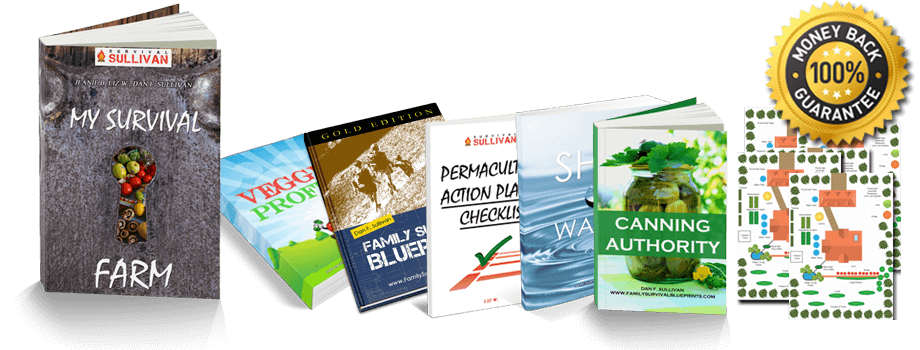
I'm Dan F. Sullivan, thank you for reading this.
Stay safe,

editor-in-chief of www.SurvivalSullivan.com
References
1. http://whale.to/a/blume.html
2. http://www.census.gov/newsroom/press-releases/2015/cb15-16.html
3. https://www.nytimes.com/2010/05/04/business/energy-environment/04weed.html
4. https://foodtank.com/news/2015/07/sixteen-successful-projects-highlighting-permaculture-use

